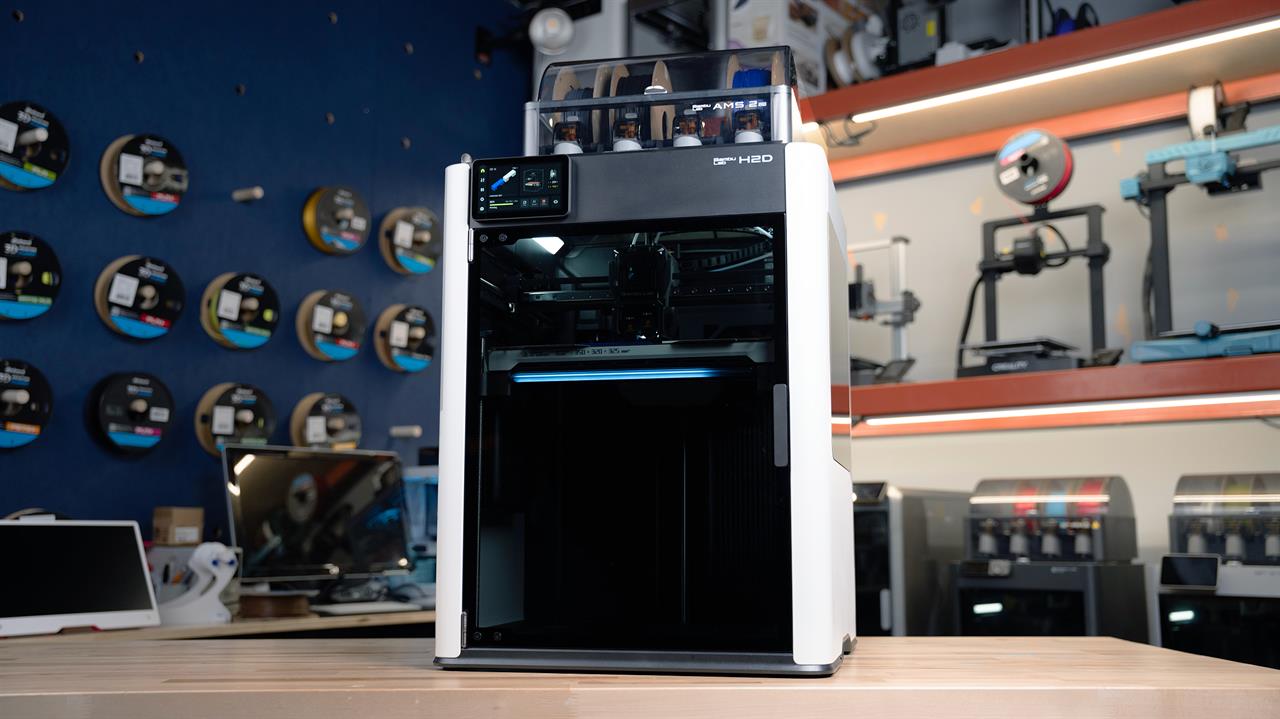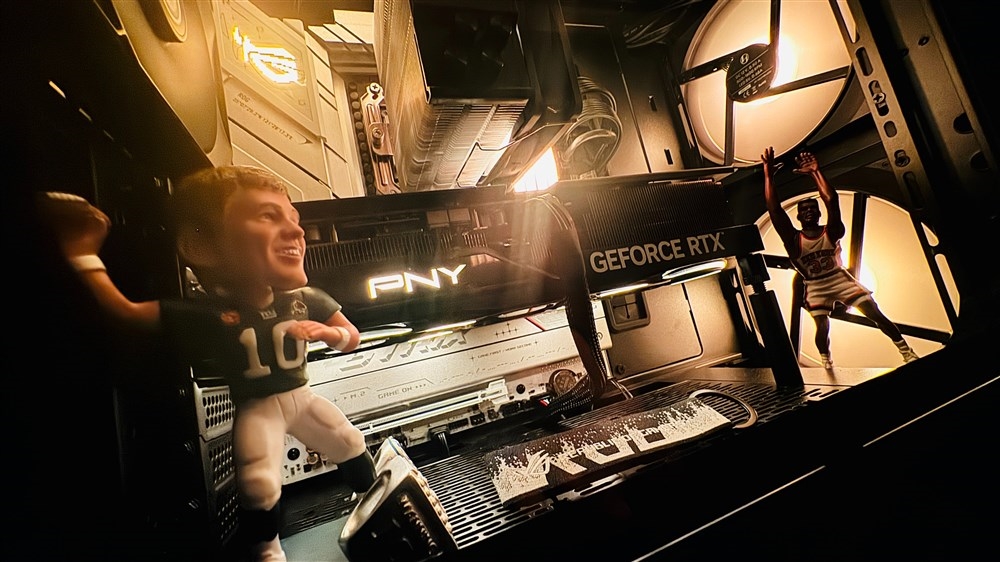Hands-on: Bambu Lab Goes Big with the New H2D 3D Printer
Bambu Lab's H2D isn't just larger; it's a feature-packed machine with dual nozzles and high speeds.Reviews

It’s not every day a new 3D printer generates the kind of buzz we’ve seen around the Bambu Lab H2D. Having spent some time with this machine in the Micro Center Maker Lab, I can tell you Bambu Lab has rethought a lot about workflow, materials, and speed.
More Room to Make
First things first: this printer is big. It boasts Bambu Lab’s largest build volume to date. With the dual nozzle system engaged, you're looking at a generous 300 x 320 x 325 mm build area. Switch to a single nozzle, and that expands slightly to 325 x 320 x 325 mm. The total available area can reach up to 350 x 320 x 325 mm. That's ample space for larger prototypes, cosplay components, or batch production of smaller parts.
Double the Nozzles, Double the Fun
The headline feature is undoubtedly the dual-nozzle system. Unlike some older dual-extrusion setups, the H2D uses a clever system where one nozzle remains stationary while the other actuates up or down when needed. This enables quicker swaps and, more importantly, opens the door to sophisticated multi-material printing.
This pairs beautifully with the new AMS 2 Pro (Automatic Material System). Bambu learned from the original AMS, adding better ventilation and easier tube management. You can still daisy-chain multiple units, and it’s even backward compatible with the X1C via an upgrade kit.
The real game-changer here is mixing materials like TPU with rigid filaments. Previously, getting TPU through an AMS was a no-go. Now, you can load TPU via the external spool holder (you can even mount two) onto one extruder and run PLA, PETG, or support materials through the AMS to the other extruder. This unlocks complex prints with flexible elements or allows for dedicated support materials for cleaner results.
Faster than Ever
Bambu printers are known for speed and the company talks about speeds up to 1,000 mm/s. While real-world print speeds often vary, even approaching that number significantly cuts down print times. For example, a simple two-color print that might have taken 30 minutes on older machines can be done in about 15 minutes.
And, to handle demanding materials at high speeds, the H2D features hardened steel nozzles capable of reaching 350°C. This allows for printing with engineering-grade materials like ASA, Nylon, ABS, and carbon fiber composites.
Smarter Printing Experience
Beyond the core mechanics, Bambu Lab has packed the H2D with quality-of-life improvements. Nozzle swaps are tool-less -- just remove the silicone sock, flip a latch, and pop in a new hot end assembly. It ships with a standard 0.4mm nozzle but supports sizes from 0.2mm to 0.8mm. The printer includes a textured PEI build plate and several sensors monitoring everything.
The slick, rotating touchscreen interface is intuitive, providing status updates, filament info (including humidity inside the AMS 2 Pro), and easy access to settings and files, plus a LED status bar along the bottom, which is great for quickly checking print progress from across a room.
The Bambu Lab H2D takes the speed and versatility Bambu is known for and adds a larger volume, versatile dual extrusion, and genuinely useful smart features. The ability to seamlessly print multi-material objects, especially combining flexible and rigid filaments, is a huge plus. It's a premium machine with a price tag to match ($2,199 for the AMS Combo), but for serious hobbyists, prosumers, or small businesses needing a capable, fast, and versatile fabrication tool, the H2D makes a compelling case.
You can check out the Bambu Lab H2D and a huge selection of other 3D printers at your local Micro Center.
Read more: 3D Printers and Maker Projects
- See the Top-Rated 3D Printers at Micro Center
- This 3D-Printed Case Turns Your M4 Mac Mini into a Mac Pro Lookalike
- Insanely Useful Card Kits to 3D Print
- Supercharge Your Stanley with These 3D Printed Accessories
- We 3D-Printed a Guitar, and You Can Too
- FDM vs. Resin 3D Printing: Which is Right for You?











